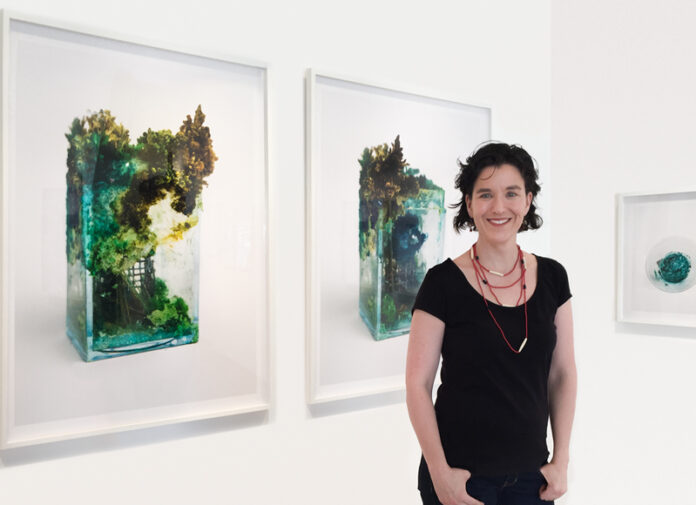by Bill Hedrick
Since the 1830’s, when photography made its debut, there has always been a heated debate on whether it is truly a form of art or simply a way of using an optical-mechanical contraption to document reality. Merriam-Webster defines art in a clear and concise fashion as “something that is created with imagination and skill and that is beautiful or that expresses important ideas or feelings.” Unlike painting, photography requires a real physical object to be there to be photographed, creating the perception that photography art is more real than a painting.
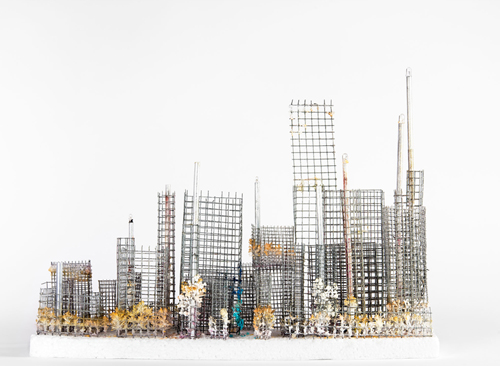
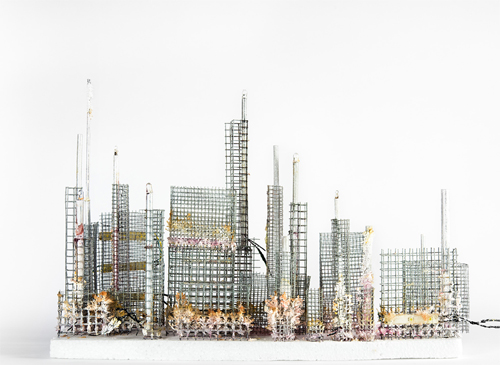
In 2019, the Longview Museum of Fine Art in Longview, Texas, hosted the works of Liz Hickok, a San Francisco-based artist working in photography, video, sculpture and installation. Her work has exhibited at art institutions across the country and internationally from Washington to Israel.
Using photography and hand-crafted structures, she creates miniature worlds that reference natural and urban environments overgrown by strange crystal formations. The colorful tableau are playful in their materials, presenting an ambiguous sense of scale that allows the viewer to imagine themselves in an otherworldly sphere.
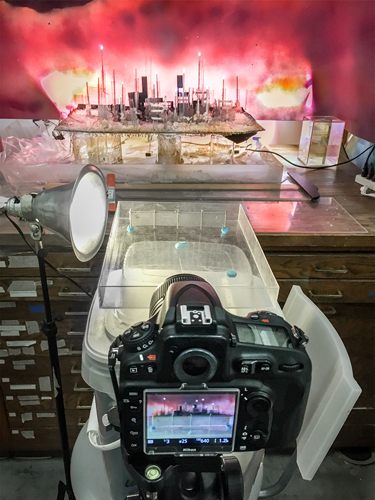
She is also a chemist, by the way. Many of her images capture her experimentation with the crystal-forming chemicals mono ammonium phosphate (MAP) and alum. As chief scientist in these phantasmagorical environments, Liz tests a variety of variables including chemical growth on various materials, the effect of submerging an object in the liquid, and how added colors travel and disperse. What she discovered was that crystals always grow in somewhat unpredictable ways, allowing wonderful accidents and surprising effects. As a result, often mundane objects from her creative process take on grand and poetic comparisons to our physical reality.
Her inspiration for much of her artistry comes from her own childhood. Liz has vivid memories of driving past a large Texaco refinery plant at night which, in the distance, resembled a “magical Oz-like city-scape.” When creating “Fugitive Topography,” Liz was inspired by a piece created by Richard Misrach titled “Petrochemical America,” a series of landscape photographs of the Mississippi River industrial corridor referred to as “Cancer Alley.”
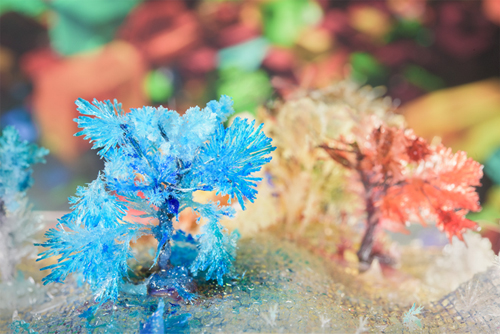
Throughout her artistic career, Liz has developed two parallel bodies of work. In her “Ground Water” series, she constructs elaborate scale models of urban spaces and floods the tiny ecosystems with crystal solution and records their ephemeral deterioration using photography and video. As time progresses, the growing crystals engulf the sculptures, transforming them into otherworldly structures. In her “Sets and Tests,” Liz takes the scenes, props, and experiments used to create the miniature worlds and photographs them on a simple, white background.
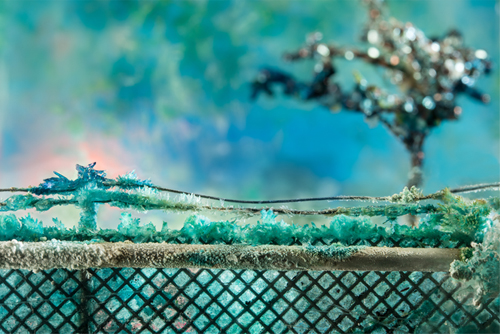
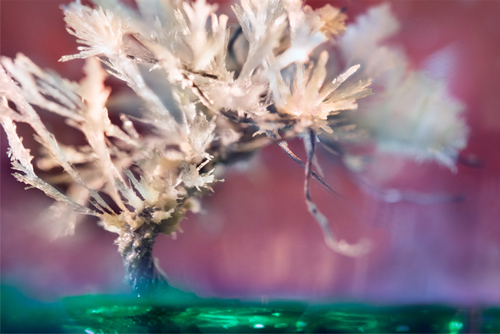
Liz photographs various setups from multiple angles using different focal lengths of the same sculptural model. She then processes the images in Adobe Lightroom to color balance and adjust the exposure. She will often Photoshop together a half-dozen or more images, change the background color, add details such as lens flare on the lights, and merge it all together to create one coherent image.
Liz Hickok has completed several public art projects including photomurals for UCSF Mission Bay and Google’s San Francisco offices. She has also created elaborate site-specific installations in the Bay Area at Headlands Center for the Arts, the Exploratorium, and New Museum of Los Gatos. Her work has attracted media attention in the New York Times and has been featured on CBS’s “The Early Show” as well as NPR’s “All Things Considered” and “Talk of the Nation.”



